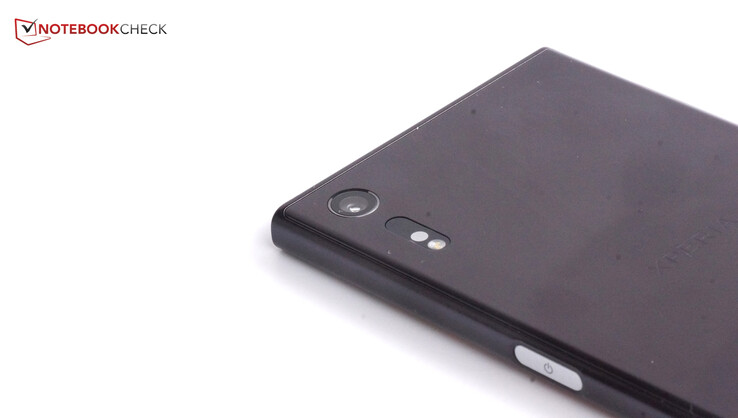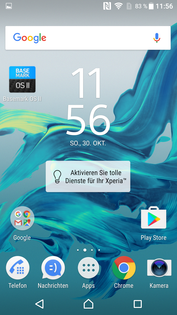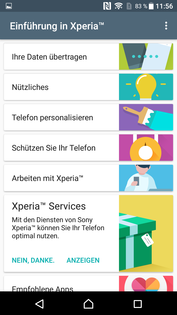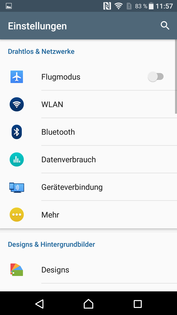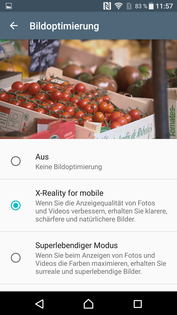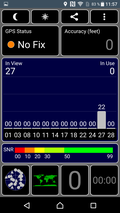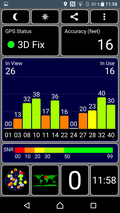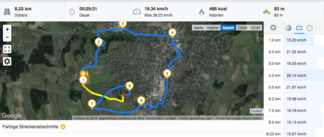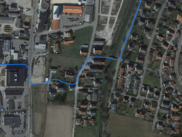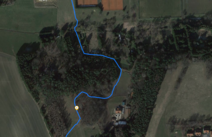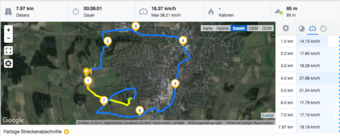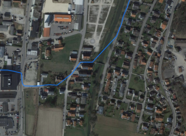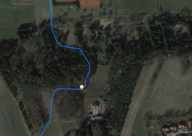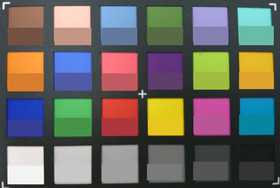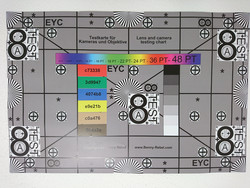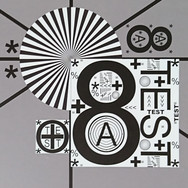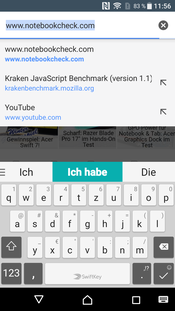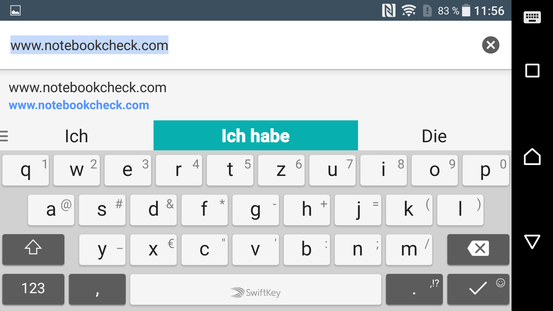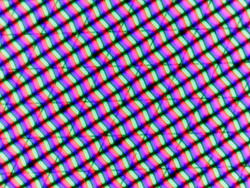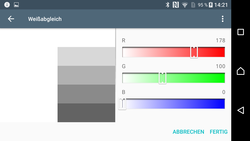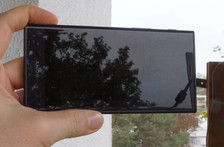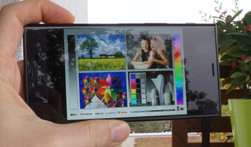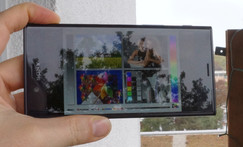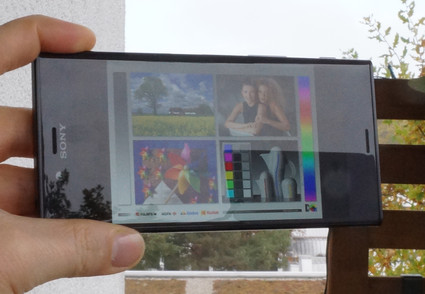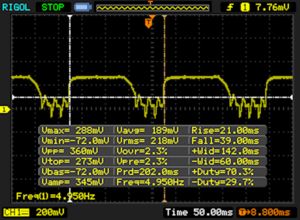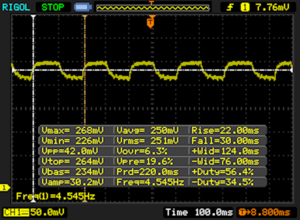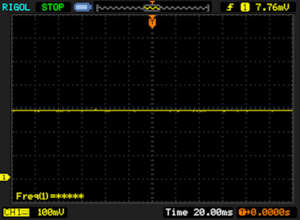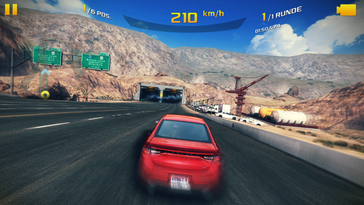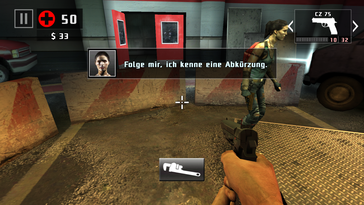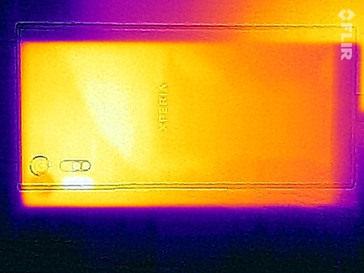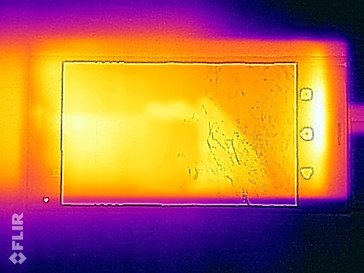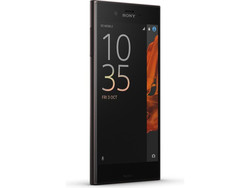Sony Xperia XZ Smartphone Review
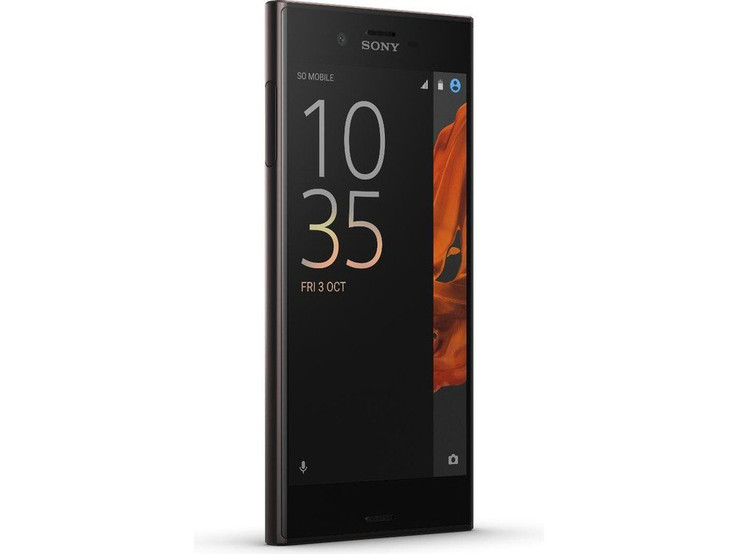
For the original German review, see here.
Sony has a vision: connected, smart devices will change our lives. The manufacturer is a little behind the times, as this vision is already becoming reality with the likes of "Smart Homes", Amazon Echo and smart wearables. The new Xperia smartphones are tagged with a big "X" and aim to be part of this new, interconnected world. Thankfully, while moving towards their new goals, Sony has kept true to their old values, such as stylish design, sturdy case, long battery life and good cameras.
The reviews of the Xperia X series (Xperia X, Xperia X Compact, Xperia XA) show that these devices are more reliable than revolutionary. In fact, at times, we liked the predecessors from the Xperia Z5 generation more.
The Xperia XZ can change all this, as it is a high-quality smartphone for 700 Euros (~$763). Most manufacturers do not even dare to put their devices in this price range, as the iPhone 7 and the Galaxy S7 are the undisputed kings of this price class.
The Xperia XZ is the successor to the Sony Xperia Z5 Premium. It not only competes with the high-end devices of Apple and Samsung but also with smartphones like the HTC 10 and, the much cheaper, OnePlus 3. In the following review we will check to see what the Sony flagship model has to offer.
Case
Sony knows how to make great smartphones. They have a good track record and were ahead of the competition (iPhones) in terms of dust and water protection for their devices. The Sony test model is IP65 / IP68 certified, which means it should be dust- and waterproof. However, Sony still cautions users against taking it for a dip and can only guarantee protection against water spills. Furthermore, the user must let the USB port dry completely before using it to charge the device. As such, we feel that Sony has given up somewhat on their waterproof concept, which is interesting as Apple is just starting to get in the game.
The Sony Xperia XZ is a mix of straight and curved surfaces: Gorilla Glass protects the display, which is curved at the edges, and the back is made of a stylish metal. The color choice for the case is also quite nice, as the predecessors had strange green or brown cases. The test model is available in black with slight burgundy, white or blue tones on the back. The case looks appealing without being ostentatious. Thanks to the curved corners, the phone sits comfortably in the hand. The only disadvantage: all surfaces are very sensitive to fingerprints.
We would expect better sturdiness for 700 Euros (~$763). The Xperia XZ is good, as pressure applied from behind or to the front does not cause display distortions. However, when the smartphone is bent, color artifacts appear on the screen.
Connectivity
3 GB RAM and 32 GB storage space are not awe-inspiring for 700 Euros (~$763), as the OnePlus 3 (400 Euros, ~$436) can offer double these amounts in both categories. Important wireless features, such as Miracast, DLNA and Bluetooth 4.2 are supported. MHL is also on-board, which means that the user can transform the USB port into an HDMI-out to display content on an external screen. NFC and USB-OTG are also included, so as to allow communication between two devices in close proximity and connect external storage devices via USB.
The automatic headphone optimization determines which headphones are being used and adjusts the sound accordingly. A digital background noise suppression feature should reduce noise levels with appropriate headphones. Sony aims to improve the sound experience with these features.
Sony also promises that the device will get to know its user better as time goes on and this will allow the phone to not only save battery but also increase security and comfort. Some of these features are from the Android OS and are also available on other Android devices.
A dual-SIM model of the Xperia XZ is also available. This is a rarity for high-end devices. Sony sweetens the pot by keeping the price for the dual-SIM model at 699 Euros (~$762). However, if you use two SIM cards, you cannot add a microSD card. The other technical details of the single SIM and dual-SIM smartphones are the same.
Software
Android 6.0.1 is used for this smartphone. Sony has only changed the icons. Android fans will be at home with this interface. New users of Android will be greeted by an extensive introduction app, which will simplify the process of transferring data from their old smartphone and show how to customize the device.
The Sony album and video apps are well-designed. The video app has a program guide for TV stations, but it cannot play TV shows directly. A remote function would have been nice to have here, but the smartphone does not have an infrared interface. The PlayStation app allows users to access PlayStation 4 Remote Play on the smartphone display or to use the device as a second screen.
Sadly, despite other nice apps for drawing and video editing, Sony has decided to include advertisement apps from Facebook and Amazon. A trial version of a virus scanner app is also included (180 days). We like the Sony Xperia Lounge, which is a customer loyalty app with various great prizes and nice themes.
Communication and GPS
The Sony Xperia XZ is comfortable to use on-the-go, thanks to the great speeds with mobile Internet: 450 MB/s for download and 50 MB/s for upload are produced by the LTE module. These speeds reach LTE Cat. 9 and match the iPhone 7. The list of supported frequencies is quite long: the device offers 20 LTE, 6 UMTS and 4 GSM bandwidths. Once again, the test model can match the offering of the iPhone 7 and should be able to find a network all over the world.
The reception quality of the LTE module is good. In city regions, we were able to access Internet with the extensive Vodafone network. Indoors, we had either full signal strength or 3/4 bars.
The Xperia XZ supports all the traditional and new standards for WLAN, such as, the 5 GHz frequency. We tested the transfer rate with our reference router, a FritzBox 6490 Cable and found out that the Xperia XZ is quite fast, but the iPhone 7 is faster. Our test model is quite good at receiving data, but when it sends data, it is even slower than the OnePlus 3.
| Networking | |
| iperf Server (receive) TCP 1 m | |
| Apple iPhone 7 | |
| Sony Xperia XZ | |
| OnePlus 3 | |
| iperf Client (transmit) TCP 1 m | |
| Apple iPhone 7 | |
| OnePlus 3 | |
| Sony Xperia XZ | |
Sadly, the GPS module was not able to locate us indoors. In addition, the module needs a long time to find sufficient satellites to pinpoint the location of the device outdoors. At best, the GPS module can narrow our location down to 4-5 meters, which is good but not great.
To determine how well the smartphone works, we took it for a ride with the professional navigation device, the Garmin Edge 500. We packed the devices in our backpack and took the bike along for an 8 km ride. The devices showed a total deviation of 250 meters, which is fine. The Xperia XZ has fewer measurement points and, as it draws straight lines between them, it appears as if we are flying over forest areas. The professional Garmin GPS does a better job, but for everyday use, the smartphone GPS should suffice.
Telephone and Speech Quality
In comparison to the standard Google app, Sony has made some tweaks to simplify the interface and is linked closer to the contacts app. The start page now has a search bar for contacts and a list of recent calls.
Sony smartphones are known for their sound. As soon as we made a call, we were impressed by the clear speech quality. However, our microphone is relatively poor: although the person on the other end can hear us even when we whisper, the sound comes across a little dull. The noise reduction feature works well for background noises, but loud noises can reduce the sensitivity of the microphone. All-in-all, the speech quality is quite good.
Cameras
The Sony flagship model wants to show off its cameras, as Sony is one of the biggest manufacturers of camera lenses. The cameras can be ready to capture a picture in 0.6 seconds. The 1/2.3" Exmor RS picture sensor is supposed to produce sharp images and the 24 mm wide-angle lens will provide greater coverage. The BIONZ image processor will provide cleaner images thanks to extensive processing of the details. We were especially intrigued by the color spectrum sensor, which analyses the ambient lighting and adjusts the captured colors to make them as accurate as possible. The Triple-Sensor technology enables the user to take pictures of moving targets and get good night captures.
The back of the device has a 23 MP camera and the front sports a 13 MP sensor. In terms of resolution, Sony takes the crown: the iPhone 7 cameras offer around half the resolution of our test model. However, resolution is not everything. We were also interested in color accuracy and image sharpness.
In general, the wide-angle lens does allow the user to capture larger expanses. The recordings have a good dynamic even in darker regions and are quite detailed. However, at times, the details in the background or at the borders can come across blurry. We believe this is the photo style which Sony wants to promote, as it is similar to the blur effect of reflex cameras. In comparison, the pictures taken with an iPhone 6S appear sharper and have fewer distortions. The Apple camera modules even produce cleaner borders. The colors of the Sony Xperia XZ are good, but they can tend towards red.
The front camera has a high resolution and also offers a wide-angle objective. The pictures are very good and look sharp. We even liked the colors.
Videos can be recorded with the rear camera in Full HD. The recordings can be done at 60 frames per second. The captured videos are good, as they offer decent sharpness and audio quality. The front camera can also take Full HD videos, but only at 30 frames per second. There is also an app for 4K videos which can produce good video quality.
We check the color accuracy and sharpness with pre-defined lighting. The Xperia XZ proves to have good color accuracy, but results might appear a little dark. The test chart looks acceptable at first glance, but text on a color background may appear a little blurry. Furthermore, the sharpness drops near the edges.
Accessories and Warranty
Sony has not put much in the delivery: a compact charger, a USB cable and an in-ear headset, which provides adequate sound.
For roughly 50 Euros (~$54), the user can purchase a "Touch Style" cover. This cover has a transparent front, which allows using the smartphone even when the case is closed. For 40 Euros (~$43), a classic cover with stand functionality can be bought. High-res headphones and a stereo microphone are also interesting options.
The warranty lasts 24 months. Please see our Guarantees, Return Policies & Warranties FAQ for country-specific information.
Input Devices and Interface
Sony uses "SwiftKey" as the virtual keyboard, which is a third-party app. The keyboard can be customized with various themes and has many settings. In the end, Google offers the same plethora of features in its standard app and, in our opinion, provides a better overview. The keyboard can be changed in the menu easily or the user can download a new one via the Play store.
The soft menu keys are placed on the screen and all physical controls can be found on the right side of the device. A camera button is included to start the photo app quickly. The buttons have clear pressure points and the power button even has an integrated fingerprint sensor, which worked reliably in our tests.
The touchscreen is responsive, even in the corners. Input is recognized quickly and comfortably. Sony did not include special gestures for navigation.
Display
First off: when compared to the display of the predecessor, the Xperia Z5 Premium, it is clear to see that the test model has improved, but it still has some flaws. The illumination is more even, the black value is lower, the colors are more accurate and the color temperatures indicate a minor blue tinge. However, is this enough to keep up with the screens of other high-end devices?
Sony has once again chosen an LC display, but this time with an FHD resolution. In contrast, the Xperia Z5 Premium was the first smartphone with a 4K display. The average brightness has dropped to 521 cd/m², which is still a good level.
The 93% illumination means the display is evenly lit. This was a weakness of the predecessor.
| |||||||||||||||||||||||||
Brightness Distribution: 93 %
Center on Battery: 544 cd/m²
Contrast: 1470:1 (Black: 0.37 cd/m²)
ΔE ColorChecker Calman: 5.8 | ∀{0.5-29.43 Ø4.78}
ΔE Greyscale Calman: 7.2 | ∀{0.09-98 Ø5}
100% sRGB (Calman 2D)
Gamma: 2.18
CCT: 8619 K
| Sony Xperia XZ IPS, 1920x1080, 5.2" | OnePlus 3 Optic-AMOLED, 1920x1080, 5.5" | Apple iPhone 7 IPS, 1334x750, 4.7" | Samsung Galaxy S7 SAMOLED, 2560x1440, 5.1" | HTC 10 Super LCD 5, 2560x1440, 5.2" | Sony Xperia Z5 Premium IPS, 3840x2160, 5.5" | |
|---|---|---|---|---|---|---|
| Screen | 2% | 30% | 24% | 12% | -25% | |
| Brightness middle (cd/m²) | 544 | 419 -23% | 556 2% | 350 -36% | 445 -18% | 560 3% |
| Brightness (cd/m²) | 521 | 431 -17% | 519 0% | 351 -33% | 434 -17% | 541 4% |
| Brightness Distribution (%) | 93 | 84 -10% | 90 -3% | 98 5% | 93 0% | 85 -9% |
| Black Level * (cd/m²) | 0.37 | 0.34 8% | 0.36 3% | 0.45 -22% | ||
| Contrast (:1) | 1470 | 1635 11% | 1236 -16% | 1244 -15% | ||
| Colorchecker dE 2000 * | 5.8 | 4.1 29% | 1.3 78% | 2.04 65% | 2.8 52% | 9.19 -58% |
| Colorchecker dE 2000 max. * | 9.8 | 12 -22% | 2.6 73% | 3.25 67% | 5.8 41% | 15.01 -53% |
| Greyscale dE 2000 * | 7.2 | 3.3 54% | 1.9 74% | 1.63 77% | 3.7 49% | 10.58 -47% |
| Gamma | 2.18 101% | 2.1 105% | 2.26 97% | 2.07 106% | 2.31 95% | 2.7 81% |
| CCT | 8619 75% | 6550 99% | 6818 95% | 6391 102% | 7164 91% | 9760 67% |
| Color Space (Percent of AdobeRGB 1998) (%) | 89.38 | 63.15 | 86.86 | 73.19 | ||
| Color Space (Percent of sRGB) (%) | 100 | 99.71 | 99.35 |
* ... smaller is better
The contrast of 1,470:1 is higher than that of the Xperia Z5 Premium due to the lower black value. Black pixels are only 0.37 cd/m² bright, which is quite dark. However, the test model cannot match the black of the AMOLED displays in the Samsung Galaxy S7 and OnePlus 3, as both competitors can simply turn off pixels and thus create "true black".
The colors of the panel can be adjusted. Sony has provided various settings for this purpose and some of them are even used for Bravia flat-screen TVs. We checked the colors of the screen with factory settings and after a manual calibration. The settings can be seen on the right side in the picture.
The clear blue tinge of the panel can be reduced with the manual settings. We confirmed this finding with the spectrophotometer and the CalMAN software. The colors are also more realistic for the most part: the green tones show a large deviation. Unfortunately, the phone suffers from larger color deviations than the competitors.
Outdoors, despite the reflective panel, the high brightness allows users to recognize the content on the Xperia XZ. Direct sunlight will make reading uncomfortable and we recommend use in shadowed areas. The brightness sensor works reliably.
The viewing angles of the panel are very good, as the content is legible even at extreme angles. The blue tinge of the display is clearly noticeable at certain angles.
Display Response Times
| ↔ Response Time Black to White | ||
|---|---|---|
| 60 ms ... rise ↗ and fall ↘ combined | ↗ 21 ms rise | |
| ↘ 39 ms fall | ||
| The screen shows slow response rates in our tests and will be unsatisfactory for gamers. In comparison, all tested devices range from 0.1 (minimum) to 240 (maximum) ms. » 100 % of all devices are better. This means that the measured response time is worse than the average of all tested devices (20.2 ms). | ||
| ↔ Response Time 50% Grey to 80% Grey | ||
| 52 ms ... rise ↗ and fall ↘ combined | ↗ 22 ms rise | |
| ↘ 30 ms fall | ||
| The screen shows slow response rates in our tests and will be unsatisfactory for gamers. In comparison, all tested devices range from 0.165 (minimum) to 636 (maximum) ms. » 88 % of all devices are better. This means that the measured response time is worse than the average of all tested devices (31.6 ms). | ||
Screen Flickering / PWM (Pulse-Width Modulation)
| Screen flickering / PWM not detected | |||
In comparison: 53 % of all tested devices do not use PWM to dim the display. If PWM was detected, an average of 8111 (minimum: 5 - maximum: 343500) Hz was measured. | |||
Performance
Our test model beats the predecessor, the Xperia Z5 Premium, in terms of performance: the new Qualcomm Snapdragon 820 MSM8996 is a high-end chip with four cores and a clock speed of 2.2 GHz. This chip can be found in the cheaper OnePlus 3.
The Xperia XZ lags behind the competition, despite having the same processor. In fact, our test model is clearly beaten by the OnePlus 3 in many benchmarks. Memory performance greatly influences the results of system benchmarks. The HTC 10, which also uses a Snapdragon 820 MSM8996, can match our test model in terms of performance. The OnePlus 3 is an exception, as it takes a larger lead.
For everyday use, the Xperia XZ works quickly and reliably. Sony should have added more performance for the price, as this would let the test model stand out from the crowd.
| AnTuTu v6 - Total Score (sort by value) | |
| Sony Xperia XZ | |
| OnePlus 3 | |
| Apple iPhone 7 | |
| Samsung Galaxy S7 | |
| HTC 10 | |
| Sony Xperia Z5 Premium | |
| 3DMark | |
| 1280x720 offscreen Ice Storm Unlimited Score (sort by value) | |
| Sony Xperia XZ | |
| OnePlus 3 | |
| Apple iPhone 7 | |
| Samsung Galaxy S7 | |
| HTC 10 | |
| Sony Xperia Z5 Premium | |
| 1280x720 offscreen Ice Storm Unlimited Graphics Score (sort by value) | |
| Sony Xperia XZ | |
| OnePlus 3 | |
| Apple iPhone 7 | |
| Samsung Galaxy S7 | |
| HTC 10 | |
| Sony Xperia Z5 Premium | |
| 1280x720 offscreen Ice Storm Unlimited Physics (sort by value) | |
| Sony Xperia XZ | |
| OnePlus 3 | |
| Apple iPhone 7 | |
| Samsung Galaxy S7 | |
| HTC 10 | |
| Sony Xperia Z5 Premium | |
| 2560x1440 Sling Shot OpenGL ES 3.0 (sort by value) | |
| Sony Xperia XZ | |
| OnePlus 3 | |
| Apple iPhone 7 | |
| Samsung Galaxy S7 | |
| HTC 10 | |
| Sony Xperia Z5 Premium | |
| 2560x1440 Sling Shot OpenGL ES 3.0 Graphics (sort by value) | |
| Sony Xperia XZ | |
| OnePlus 3 | |
| Apple iPhone 7 | |
| Samsung Galaxy S7 | |
| HTC 10 | |
| Sony Xperia Z5 Premium | |
| 2560x1440 Sling Shot OpenGL ES 3.0 Physics (sort by value) | |
| Sony Xperia XZ | |
| OnePlus 3 | |
| Apple iPhone 7 | |
| Samsung Galaxy S7 | |
| HTC 10 | |
| Sony Xperia Z5 Premium | |
| GFXBench (DX / GLBenchmark) 2.7 | |
| T-Rex Onscreen (sort by value) | |
| Sony Xperia XZ | |
| OnePlus 3 | |
| Apple iPhone 7 | |
| Samsung Galaxy S7 | |
| HTC 10 | |
| Sony Xperia Z5 Premium | |
| 1920x1080 T-Rex Offscreen (sort by value) | |
| Sony Xperia XZ | |
| OnePlus 3 | |
| Apple iPhone 7 | |
| Samsung Galaxy S7 | |
| HTC 10 | |
| Sony Xperia Z5 Premium | |
| GFXBench 3.0 | |
| on screen Manhattan Onscreen OGL (sort by value) | |
| Sony Xperia XZ | |
| OnePlus 3 | |
| Apple iPhone 7 | |
| Samsung Galaxy S7 | |
| HTC 10 | |
| Sony Xperia Z5 Premium | |
| 1920x1080 1080p Manhattan Offscreen (sort by value) | |
| Sony Xperia XZ | |
| OnePlus 3 | |
| Apple iPhone 7 | |
| Samsung Galaxy S7 | |
| HTC 10 | |
| Sony Xperia Z5 Premium | |
| GFXBench 3.1 | |
| on screen Manhattan ES 3.1 Onscreen (sort by value) | |
| Sony Xperia XZ | |
| OnePlus 3 | |
| Apple iPhone 7 | |
| Samsung Galaxy S7 | |
| HTC 10 | |
| Sony Xperia Z5 Premium | |
| 1920x1080 Manhattan ES 3.1 Offscreen (sort by value) | |
| Sony Xperia XZ | |
| OnePlus 3 | |
| Apple iPhone 7 | |
| Samsung Galaxy S7 | |
| HTC 10 | |
| Sony Xperia Z5 Premium | |
| PCMark for Android - Work performance score (sort by value) | |
| Sony Xperia XZ | |
| OnePlus 3 | |
| Samsung Galaxy S7 | |
| HTC 10 | |
| Sony Xperia Z5 Premium | |
| Geekbench 4.0 | |
| 64 Bit Single-Core Score (sort by value) | |
| Sony Xperia XZ | |
| OnePlus 3 | |
| Apple iPhone 7 | |
| 64 Bit Multi-Core Score (sort by value) | |
| Sony Xperia XZ | |
| OnePlus 3 | |
| Apple iPhone 7 | |
| Compute RenderScript Score (sort by value) | |
| Sony Xperia XZ | |
| OnePlus 3 | |
The memory access speeds have also been improved. Once again, competitors like the OnePlus 3 or the Samsung Galaxy S7 have a clear advantage. Furthermore, in the Random-Write test, the predecessor upsets our test model.
The Xperia XZ does a poor job when reading SD cards: we used a reference memory card for the tests, the Toshiba Exceria Pro M401. At times, our test model is half as fast as the competitors from Samsung and HTC.
| AndroBench 3-5 | |
| Sequential Read 256KB (sort by value) | |
| Sony Xperia XZ | |
| OnePlus 3 | |
| Samsung Galaxy S7 | |
| HTC 10 | |
| Sony Xperia Z5 Premium | |
| Sequential Write 256KB (sort by value) | |
| Sony Xperia XZ | |
| OnePlus 3 | |
| Samsung Galaxy S7 | |
| HTC 10 | |
| Sony Xperia Z5 Premium | |
| Random Read 4KB (sort by value) | |
| Sony Xperia XZ | |
| OnePlus 3 | |
| Samsung Galaxy S7 | |
| HTC 10 | |
| Sony Xperia Z5 Premium | |
| Random Write 4KB (sort by value) | |
| Sony Xperia XZ | |
| OnePlus 3 | |
| Samsung Galaxy S7 | |
| HTC 10 | |
| Sony Xperia Z5 Premium | |
| Sequential Read 256KB SDCard (sort by value) | |
| Sony Xperia XZ | |
| Samsung Galaxy S7 | |
| HTC 10 | |
| Sequential Write 256KB SDCard (sort by value) | |
| Sony Xperia XZ | |
| Samsung Galaxy S7 | |
| HTC 10 | |
Our test model can match most of the competition when surfing the web with modern technologies, like HTML5. However, it cannot catch up with the super-fast iPhone 7.
Overall, the performance of the Sony Xperia XZ is fine, but at no point was it extraordinary.
| Mozilla Kraken 1.1 - Total (sort by value) | |
| Sony Xperia XZ | |
| OnePlus 3 | |
| Apple iPhone 7 | |
| Samsung Galaxy S7 | |
| HTC 10 | |
| Sony Xperia Z5 Premium | |
| Octane V2 - Total Score (sort by value) | |
| Sony Xperia XZ | |
| OnePlus 3 | |
| Apple iPhone 7 | |
| Samsung Galaxy S7 | |
| HTC 10 | |
| Sony Xperia Z5 Premium | |
| WebXPRT 2015 - Overall (sort by value) | |
| Sony Xperia XZ | |
| OnePlus 3 | |
| Apple iPhone 7 | |
| Samsung Galaxy S7 | |
| HTC 10 | |
| Sony Xperia Z5 Premium | |
| JetStream 1.1 - Total Score (sort by value) | |
| Sony Xperia XZ | |
| OnePlus 3 | |
| Apple iPhone 7 | |
| Samsung Galaxy S7 | |
| HTC 10 | |
| Sony Xperia Z5 Premium | |
* ... smaller is better
Games
The device only supports 30 frames per second, but at the same time, it is capable of running demanding games, such as Asphalt 8: Airborne. The device runs games well, but the slow memory access times can increase the load times significantly.
The position sensor and precise touchscreen are great input devices, as they work reliably.
| Asphalt 8: Airborne | |||
| Settings | Value | ||
| high | 30 fps | ||
| very low | 30 fps | ||
| Dead Trigger 2 | |||
| Settings | Value | ||
| high | 30 fps | ||
Emissions
Temperature
The surface temperatures were already a problem for the previous Xperia models. At times, the devices would turn off when recording 4K videos due to high SoC temperatures. Thankfully, the test model is different as the surface temperatures never reached critical values. Even at load, the test model stays below 40 °C.
The SoC can deliver full performance, even after long periods of load, as shown by the battery test of GFXBench.
(+) The maximum temperature on the upper side is 38.5 °C / 101 F, compared to the average of 35.2 °C / 95 F, ranging from 21.9 to 247 °C for the class Smartphone.
(+) The bottom heats up to a maximum of 39.7 °C / 103 F, compared to the average of 34 °C / 93 F
(±) In idle usage, the average temperature for the upper side is 33.8 °C / 93 F, compared to the device average of 32.9 °C / 91 F.
Speakers
Surely, Sony would include great speakers? The manufacturer has a large audio department and produces various headphones and speakers. The Xperia XZ is equipped with two front-facing stereo speakers.
Well, the speakers are not bad, especially when the "ClearAudio+" setting is active in the menu. However, they are not very loud (max 77 dB) and the sound output is a little erratic. In exchange, the user will get more bass than with other devices and, at max volume, the output is clear.
Subjectively, the speakers sound better than what the Pink Noise tests show. Movies have a little extra oomph added thanks to the capable, yet small speakers and music sounds clear and balanced.
Sony Xperia XZ audio analysis
(±) | speaker loudness is average but good (77 dB)
Bass 100 - 315 Hz
(-) | nearly no bass - on average 21.3% lower than median
(-) | bass is not linear (21.2% delta to prev. frequency)
Mids 400 - 2000 Hz
(±) | higher mids - on average 6.5% higher than median
(±) | linearity of mids is average (7.7% delta to prev. frequency)
Highs 2 - 16 kHz
(±) | higher highs - on average 5.8% higher than median
(±) | linearity of highs is average (8.7% delta to prev. frequency)
Overall 100 - 16.000 Hz
(±) | linearity of overall sound is average (26.6% difference to median)
Compared to same class
» 68% of all tested devices in this class were better, 5% similar, 27% worse
» The best had a delta of 11%, average was 35%, worst was 134%
Compared to all devices tested
» 81% of all tested devices were better, 4% similar, 15% worse
» The best had a delta of 4%, average was 24%, worst was 134%
Apple iPhone 7 audio analysis
(+) | speakers can play relatively loud (83.1 dB)
Bass 100 - 315 Hz
(-) | nearly no bass - on average 21.8% lower than median
(±) | linearity of bass is average (9.5% delta to prev. frequency)
Mids 400 - 2000 Hz
(+) | balanced mids - only 4.3% away from median
(+) | mids are linear (6% delta to prev. frequency)
Highs 2 - 16 kHz
(±) | higher highs - on average 5.9% higher than median
(±) | linearity of highs is average (8.2% delta to prev. frequency)
Overall 100 - 16.000 Hz
(±) | linearity of overall sound is average (20.9% difference to median)
Compared to same class
» 38% of all tested devices in this class were better, 8% similar, 54% worse
» The best had a delta of 11%, average was 35%, worst was 134%
Compared to all devices tested
» 56% of all tested devices were better, 8% similar, 36% worse
» The best had a delta of 4%, average was 24%, worst was 134%
Samsung Galaxy S7 audio analysis
(+) | speakers can play relatively loud (87.4 dB)
Bass 100 - 315 Hz
(-) | nearly no bass - on average 25.2% lower than median
(±) | linearity of bass is average (9.2% delta to prev. frequency)
Mids 400 - 2000 Hz
(+) | balanced mids - only 4.1% away from median
(+) | mids are linear (5% delta to prev. frequency)
Highs 2 - 16 kHz
(±) | higher highs - on average 6.6% higher than median
(+) | highs are linear (6.3% delta to prev. frequency)
Overall 100 - 16.000 Hz
(±) | linearity of overall sound is average (20.9% difference to median)
Compared to same class
» 38% of all tested devices in this class were better, 8% similar, 54% worse
» The best had a delta of 11%, average was 35%, worst was 134%
Compared to all devices tested
» 56% of all tested devices were better, 8% similar, 36% worse
» The best had a delta of 4%, average was 24%, worst was 134%
OnePlus 3 audio analysis
(+) | speakers can play relatively loud (88.6 dB)
Bass 100 - 315 Hz
(-) | nearly no bass - on average 30.9% lower than median
(±) | linearity of bass is average (11.3% delta to prev. frequency)
Mids 400 - 2000 Hz
(+) | balanced mids - only 4.2% away from median
(+) | mids are linear (4.9% delta to prev. frequency)
Highs 2 - 16 kHz
(±) | higher highs - on average 5.6% higher than median
(+) | highs are linear (3.2% delta to prev. frequency)
Overall 100 - 16.000 Hz
(±) | linearity of overall sound is average (21.8% difference to median)
Compared to same class
» 44% of all tested devices in this class were better, 8% similar, 48% worse
» The best had a delta of 11%, average was 35%, worst was 134%
Compared to all devices tested
» 61% of all tested devices were better, 7% similar, 32% worse
» The best had a delta of 4%, average was 24%, worst was 134%
HTC 10 audio analysis
(+) | speakers can play relatively loud (83.1 dB)
Bass 100 - 315 Hz
(-) | nearly no bass - on average 20.4% lower than median
(±) | linearity of bass is average (12.9% delta to prev. frequency)
Mids 400 - 2000 Hz
(±) | higher mids - on average 7.3% higher than median
(±) | linearity of mids is average (8.9% delta to prev. frequency)
Highs 2 - 16 kHz
(±) | higher highs - on average 10.3% higher than median
(+) | highs are linear (6% delta to prev. frequency)
Overall 100 - 16.000 Hz
(±) | linearity of overall sound is average (27.4% difference to median)
Compared to same class
» 71% of all tested devices in this class were better, 5% similar, 24% worse
» The best had a delta of 11%, average was 35%, worst was 134%
Compared to all devices tested
» 83% of all tested devices were better, 4% similar, 13% worse
» The best had a delta of 4%, average was 24%, worst was 134%
LG G5 audio analysis
(+) | speakers can play relatively loud (86.4 dB)
Bass 100 - 315 Hz
(-) | nearly no bass - on average 28.3% lower than median
(±) | linearity of bass is average (12.5% delta to prev. frequency)
Mids 400 - 2000 Hz
(+) | balanced mids - only 3.6% away from median
(+) | mids are linear (4.3% delta to prev. frequency)
Highs 2 - 16 kHz
(+) | balanced highs - only 3.8% away from median
(+) | highs are linear (1.9% delta to prev. frequency)
Overall 100 - 16.000 Hz
(±) | linearity of overall sound is average (18.8% difference to median)
Compared to same class
» 22% of all tested devices in this class were better, 10% similar, 68% worse
» The best had a delta of 11%, average was 35%, worst was 134%
Compared to all devices tested
» 42% of all tested devices were better, 8% similar, 50% worse
» The best had a delta of 4%, average was 24%, worst was 134%
Frequency diagram in comparison (checkboxes above can be selected)
Energy Management
Power Consumption
The predecessor, the Xperia Z5 Premium, was not very conservative in the power department. The high-resolution display was the excuse at that time. However, the Xperia XZ needs even more power, despite having a lower resolution panel. Other smartphones with the same SoC can manage with much less.
3.6 W on average while idle and 7 W at load are far too much. We are happy that the test model does not take too much power while off or in standby mode.
| Off / Standby | |
| Idle | |
| Load |
|
Key:
min: | |
| Sony Xperia XZ 2900 mAh | OnePlus 3 3000 mAh | Apple iPhone 7 1960 mAh | Samsung Galaxy S7 3000 mAh | HTC 10 3000 mAh | Sony Xperia Z5 Premium 3430 mAh | |
|---|---|---|---|---|---|---|
| Power Consumption | 41% | 56% | 52% | 33% | 25% | |
| Idle Minimum * (Watt) | 1.76 | 0.57 68% | 0.54 69% | 0.68 61% | 0.68 61% | 0.83 53% |
| Idle Average * (Watt) | 3.6 | 1.24 66% | 1.51 58% | 1.02 72% | 1.49 59% | 2.36 34% |
| Idle Maximum * (Watt) | 4.06 | 1.36 67% | 1.54 62% | 1.14 72% | 1.91 53% | 2.42 40% |
| Load Average * (Watt) | 7 | 5.92 15% | 3.75 46% | 4.73 32% | 7.4 -6% | 7.27 -4% |
| Load Maximum * (Watt) | 9.52 | 10.53 -11% | 5.01 47% | 7.16 25% | 9.71 -2% | 9.18 4% |
* ... smaller is better
Battery Life
Looking at the battery life, our worst fears are confirmed. The high power usage results in short runtimes. In addition, the battery of our test model is smaller than that of the Xperia Z5 Premium. It is even a little smaller than the batteries of the competitors: 2,900 mAh or 11 Wh are provided for the Xperia XZ.
The device lasts 7:18 hours in the WLAN test. This is much longer than the Xperia Z5 Premium, but the Samsung Galaxy S7, the iPhone 7 and the OnePlus 3 easily take a lead over our device. The idle, load and video run times are also much shorter than those of the competition.
Overall, the Xperia XZ will last a day. If you are very conservative, it might even last two days. However, other devices do a better job in this price class.
| Sony Xperia XZ 2900 mAh | OnePlus 3 3000 mAh | Apple iPhone 7 1960 mAh | Samsung Galaxy S7 3000 mAh | HTC 10 3000 mAh | Sony Xperia Z5 Premium 3430 mAh | |
|---|---|---|---|---|---|---|
| Battery runtime | 56% | 22% | 43% | 12% | -2% | |
| Reader / Idle (h) | 18.8 | 22.3 19% | 29.5 57% | 30.2 61% | 21.2 13% | 21.3 13% |
| H.264 (h) | 8.4 | 14.1 68% | 12 43% | 14.9 77% | 10.8 29% | 6.9 -18% |
| WiFi v1.3 (h) | 7.3 | 14 92% | 8.6 18% | 7.6 4% | 6.9 -5% | 6.2 -15% |
| Load (h) | 3.1 | 4.5 45% | 2.1 -32% | 4 29% | 3.4 10% | 3.5 13% |
Pros
Cons
Verdict
The visionary, the Xperia XZ, is sadly not strong enough to ignite a revolution. In many ways, this test model is far too conservative and does not take risks. We could classify it as reliable rather than "revolutionary".
The camera is a special highlight of the marketing campaign: it offers many nice features, but it is decidedly average when compared to the competition. Furthermore, the device lacks an image stabilizer, which would help improve picture quality in poor lighting conditions. The Xperia XZ can take average pictures, just like most of the competition.
In terms of the battery life, the color accuracy of the display, the speeds of the WLAN module and the power consumption, the Xperia XZ is lacking. We would expect more for a smartphone priced at 700 Euros (~$763). The slow memory speeds are especially aggravating, as they push up the load times of games noticeably.
Sony has done a lot right: the software has many helpful settings for new users and the provided tools can even improve the sound and display colors. The stylish design of the phone is a definite plus. The speakers and surface temperatures are also quite good. We especially appreciate the offerings of the customer loyalty app, the Xperia Lounge.
In the end, the Xperia XZ is definitely average in many departments. As such, it cannot be a standout high-end smartphone. Sony lacks real innovation but has produced a good smartphone.
We know that Sony is capable of revolutionizing the smartphone market: the Xperia Z5 Premium and other compact high-end models are proof of their creativity. However, the Xperia XZ does not challenge the established standards for smartphones. Despite being a reliable high-end device, its features may not be worth 700 Euros (~$763), as there are many competitors, like the OnePlus 3, the Galaxy S7 or the iPhone 7, which perform much better.
Sony Xperia XZ
- 11/02/2016 v5.1 (old)
Florian Wimmer




